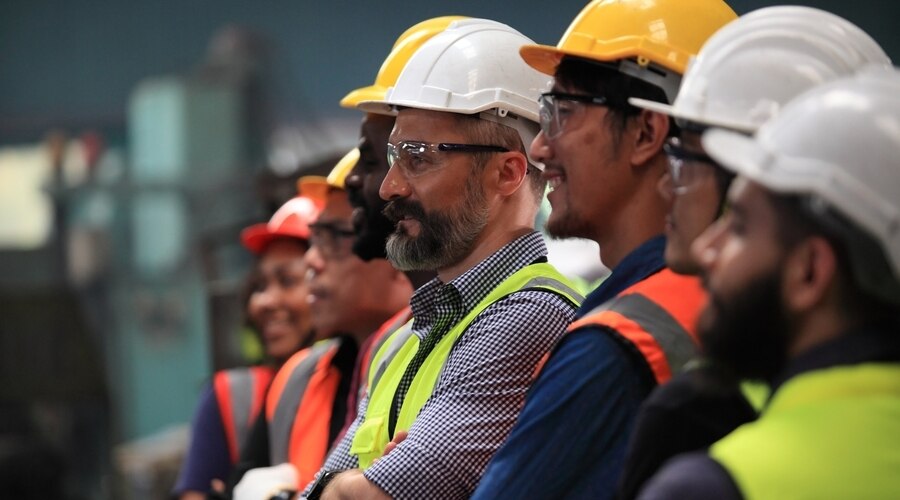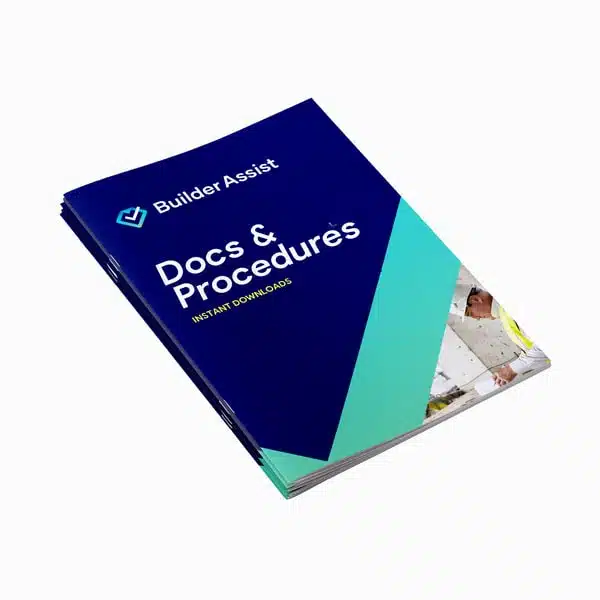
Construction induction training in Australia is a cornerstone that ensures workplace safety and compliance within the construction industry.
The comprehensive training program is designed to equip individuals with the knowledge, skills, and awareness necessary to work safely and responsibly on construction sites across the country.
With a focus on hazard identification, risk management, and legislative requirements, construction induction training promotes safety, reduces workplace accidents, and protects the health and well-being of workers. It's a mandatory requirement for all individuals involved in construction work, from tradespeople and site managers to apprentices and visitors. Construction induction training underscores the commitment of the industry to uphold the highest standards of workplace health and safety.
This guide explores the key aspects of construction induction training in Australia. It includes its purpose, content, certification requirements, and the legal obligations associated with obtaining and maintaining accreditation.

Each state and territory has its own set of regulations and requirements. Therefore, understanding the specific guidelines is essential for both employers and workers.
Why Construction Induction Training and what do you learn?
Construction induction training in Australia ensures individuals working in the construction industry possess the necessary knowledge and skills to recognise and mitigate workplace hazards effectively. By undergoing the training, workers gain an understanding of essential safety principles. This includes hazard identification, risk assessment, and compliance with relevant legislative requirements. Construction induction training aims to promote safety within the industry. In addition, it emphasises the importance of maintaining a safe work environment for oneself and others.
The type of content covered in construction induction training includes:
- Hazard identification
- Risk assessment and management
- Legislative requirements and responsibilities
- Personal protective equipment (PPE) usage
- Emergency procedures and evacuation protocols
- Safe work practices and procedures
- Communication and reporting processes
- Environmental awareness and sustainability considerations.
What is a 'White Card' in the Australian Construction Industry?
In the Australian construction industry, a 'White Card' refers to a nationally recognised certification for induction training. It indicates an individual has undergone mandatory construction induction training. The card serves as evidence that the holder has completed the necessary training to work safely and responsibly on construction sites across Australia.
The 'White Card' certification is officially known as the 'Construction Induction Card'. It's issued following the successful completion of a training course accredited by the relevant regulatory authority in each state and territory. The training program covers essential topics related to work health and safety (WHS) in the construction industry. Importantly, hazard identification, risk management, and legislative requirements.
Who is Required to Hold a 'White Card' in Australia?
Obtaining a 'White Card' is a legal requirement for anyone undertaking construction work or entering construction sites in Australia. This includes but is not limited to:
Construction workers:
Individuals directly involved in construction activities. For example, carpenters, electricians, plumbers, bricklayers, and labourers, must hold a valid 'White Card.'
Site managers and supervisors:
Those who oversee construction projects or manage workers on construction sites, are also required to possess a 'White Card'. It demonstrates their understanding of WHS principles and commitment to promoting a safe work environment.
Contractors and subcontractors:
Individuals or companies engaged to perform specific tasks or services on construction sites. For example, subcontractors and tradespeople, must possess a 'White Card' to comply with WHS regulations and gain access to work sites.
Visitors and inspectors:
Anyone visiting a construction site for inspection, consultation, or other purposes must also hold a valid 'White Card'. This ensures awareness of hazards, safety protocols, and emergency procedures.
Apprentices and trainees:
Apprentices and trainees undergoing formal training or practical work experience in the construction industry are required to obtain a 'White Card'. Again, it ensures they receive proper safety training and supervision while on site.
It is essential for individuals working in the construction industry to carry their 'White Card' with them at all times while on site. They are also required to present it upon request to site supervisors, safety officers, or regulatory authorities as proof of their certification. Failure to hold a valid 'White Card' can result in penalties, fines, or restrictions on access to construction sites. Compliance with WHS regulations in the Australian construction industry is paramount.
Each state and territory has its own set of regulations and requirements. Therefore, understanding the specific guidelines is essential for both employers and workers. Below, we outline the construction induction training requirements in each state and territory. This will help you navigate the complexities of compliance.
New South Wales (NSW)
In NSW, construction induction training is governed by SafeWork NSW. The mandatory training program, known as the 'White Card' course, covers essential topics such as work health and safety (WHS) laws, construction hazards, and risk management. Individuals must complete this training before they can work on construction sites in NSW.
Victoria (VIC)
WorkSafe Victoria oversees construction induction training in Victoria. As in NSW, individuals must obtain a 'White Card' by completing the mandatory training program. The training covers WHS legislation, hazard identification, and control measures specific to the construction industry.
Queensland (QLD)
In Queensland, construction induction training is regulated by the Queensland Building and Construction Commission (QBCC). The 'White Card' training program, also known as 'General Construction Induction,' is mandatory for all construction workers in QLD. The course covers WHS laws, construction site safety, and risk management practices.
Western Australia (WA)
Construction induction training in Western Australia is overseen by WorkSafe WA. Workers are required to complete the 'White Card' training program, which covers essential safety knowledge and skills applicable to the construction industry. The training ensures that workers understand their legal obligations and can contribute to a safe work environment.
South Australia (SA)
SafeWork SA is responsible for construction induction training requirements in South Australia. The 'White Card' course is mandatory for all construction workers in SA and covers topics such as WHS legislation, hazard identification, and control measures. Completing the training ensures that workers are equipped with the necessary knowledge to work safely on construction sites.
Tasmania (TAS)
In Tasmania, construction induction training is regulated by WorkSafe Tasmania. The 'White Card' training program is mandatory for construction workers and covers essential safety principles. This includes risk assessment, hazard control, and emergency procedures. Completion of the training is a prerequisite for working in the construction industry in TAS.
Northern Territory (NT)
Construction induction training in the Northern Territory is overseen by NT WorkSafe. The 'White Card' course is mandatory for all construction workers and provides comprehensive training on WHS legislation, hazard management, and safe work practices. Workers must complete the training before commencing work on NT construction sites.
Australian Capital Territory (ACT)
In the Australian Capital Territory, construction induction training is regulated by Access Canberra. The 'White Card' training program is compulsory for construction workers. It covers essential safety topics such as WHS laws, risk assessment, and control measures. Completion of the training is required before individuals can work on ACT construction sites.
For comprehensive and up-to-date information on construction induction training requirements in your state or territory, consult the relevant regulatory authority or accredited training provider. Investing in proper training not only enhances safety, it also contributes to the overall success and reputation of the construction industry in Australia.
Site-Specific Induction Training is Required in Australia
In addition to holding a valid ‘white card’, site-specific induction training is a critical to ensure workplace safety and compliance in Australia's construction industry.
This training is tailored to specific hazards, risks, and procedures present at each construction site. It helps workers understand their responsibilities and navigate potential site-specific dangers effectively.
The content of site-specific induction training may vary. It will depend on factors like the type of construction work being undertaken, the location of the site, and any unique hazards present. However, common topics covered in site-specific induction training include:
Site-specific hazards and risks:
Workers are briefed on the specific hazards present at the construction site. For example, uneven terrain, overhead obstructions, hazardous materials, and environmental factors like extreme weather conditions.
Emergency procedures:
Workers are trained on site-specific emergency procedures. This includes evacuation routes, assembly points, and protocols for responding to incidents like fires, chemical spills, or medical emergencies.
Worksite rules and procedures:
Site-specific rules and procedures are communicated to workers. For example access control, traffic management, and personal protective equipment (PPE) requirements. This ensures compliance and promotes a safe work environment.
Communication channels:
Workers are informed about on-site communication channels. For example, how to report hazards, raise concerns, and seek assistance from supervisors or safety personnel.
Who is Responsible for Site-Specific Induction Training?
The responsibility to provide site-specific induction training typically falls on the principal contractor or site manager. It's their duty to ensure all workers and subcontractors receive adequate training before commencing work on site.
Additionally, employers have a legal obligation under work health and safety (WHS) legislation to provide a safe work environment for their employees. This includes ensuring that workers are adequately trained and informed about site-specific hazards and procedures.
How Does Site-Specific Induction Training Take Place?
Site-specific induction training can take place through various methods. This will depend on the preferences and resources available to the employer or principal contractor. Some common approaches include:
On-site training sessions:
Conducting face-to-face induction sessions on-site allows for direct interaction with workers. It also provides an opportunity to address site-specific hazards and procedures in real-time. These sessions may be led by experienced supervisors or safety officers.
Online or digital training modules:
Utilising online or digital platforms to deliver site-specific induction training allows for flexibility and scalability. In particular, for large construction projects with multiple workers or subcontractors. Interactive modules can be developed to simulate site conditions and scenarios, which can enhance engagement and retention.
Written materials and resources:
Providing written materials such as handbooks, manuals, or Safety Management Plans detailing site-specific hazards, procedures, and emergency protocols can supplement training efforts and serve as a reference for workers to consult as needed.
Video presentations:
Creating video presentations or safety inductions that visually illustrate site-specific hazards, procedures, and best practices can be an effective way to convey information to workers. It can be particularly effective for visual learners, or individuals with limited literacy skills.
By ensuring that site-specific induction training is comprehensive, accessible, and regularly updated to reflect changes in site conditions or procedures, employers can fulfil their legal obligations, mitigate risks, and promote safety within the construction industry in Australia.
Construction induction training in Australia is a fundamental pillar that fosters workplace safety and adherence to regulations within the construction industry. The comprehensive program is meticulously designed to furnish participants with the requisite knowledge, competencies, and awareness vital to execute work safely and responsibly across construction sites nationwide. By prioritising hazard identification, risk mitigation, and legislative comprehension, construction workers can help curb workplace incidents, and safeguard the health and welfare of everyone on site.
Induction Resources
Builder Assist provide a number of documentation resources for induction, including:
- Site Induction Procedure
- Visitors Site Induction Record
- Site Induction Register
- General Site Induction Record
- New Employee Induction
Induction documentation can also be found in our:

Safety Management Plans (WHS)
Specifically designed for each trade starting up a business, these Work Health Safety Management Plans or WHS Management Plans, provide support with the management of Work Health & Safety in the workplace. Also referred to as Occupational Health & Safety (OH&S) the material provided in this section will assist with WHS/OHS management and training requirements for the workplace.


